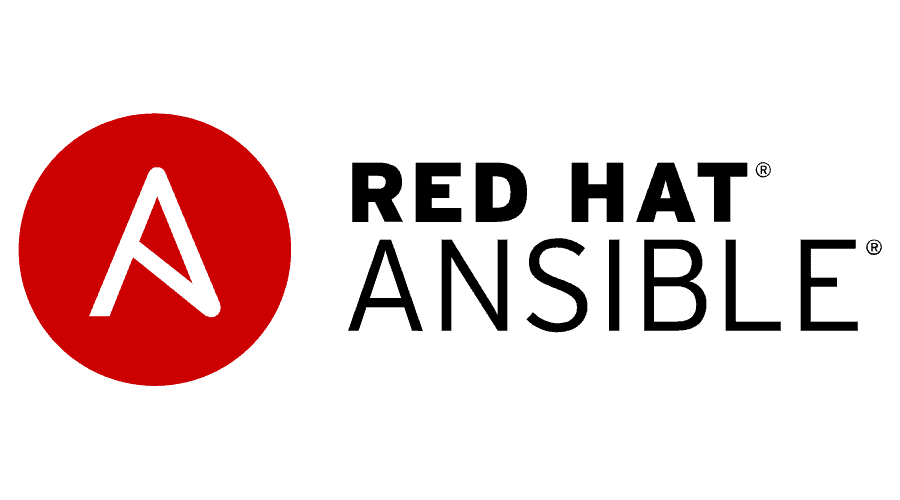5 Quick Steps for Ansible Getting Started in No Time

Ansible getting started can seem like a daunting task, especially if you’re new to automation.
You might be wondering…how do I even begin?
The good news is, getting your feet wet in the world of Ansible doesn’t have to be an uphill battle. It’s actually quite straightforward once you grasp the basics.
We’ve all been there – staring at that blinking cursor, unsure where to start. But trust me…
This journey into Ansible isn’t as scary as it seems!
In fact, once you get going with Ansible and see how it simplifies your workflow, you’ll wonder why you didn’t dive in sooner.
No need for panic or cold sweats here!
What is Ansible Getting Started

For small business owners and entrepreneurs, automation can be a powerful ally. And when it comes to automation solutions, there’s one software tool that stands out – Ansible.
This open-source community project has quickly become the go-to choice for configuration management and infrastructure provisioning tasks.
The beauty of Ansible lies in its simplicity and power. With Ansible installed on any machine acting as a control node, you can easily manage multiple nodes (servers), automating repetitive tasks like system updates or application deployment.
How Ansible Simplifies Your Workflow
The beauty of Ansible lies in its simplicity. It’s an enterprise automation solution that works through a control node and managed nodes, executing tasks via modules defined by users. The real game-changer is the use of YAML – a human-readable data format that lets you define Ansible playbooks without needing any extra agents on your managed machines.
The Role of Control Node in Ansible
A control node can be any machine where Ansible is installed. This becomes the command center for all operations carried out with this software tool. Once equipped with Ansible, it forms connections to your managed nodes and dispatches Ansible commands as outlined in your playbook.
This system removes the need for installing additional software or management systems on each individual machine within your infrastructure network. Everything gets handled remotely from one central point, making it incredibly efficient, especially when managing large-scale infrastructures.
Unpacking Managed Nodes in Ansible
In contrast to the control node, managed nodes are essentially every other device you want under Ansible’s watchful eye using its configuration management capabilities. These could range from servers hosting various services like web applications or databases right down to personal computers, depending on what needs automation within your specific context.
All these different devices are represented inside a simplistic inventory file maintained by Ansible, which groups them into categories based on user-defined parameters such as function, location, operating system, etc. This makes things easier not only to organize their infrastructure but also to target specific groups while running an Ansible playbook, thus simplifying the overall workflow significantly.
The Ease of Getting Started with Ansible
One major selling point for Ansible is its simplicity, making it a perfect fit for small businesses and entrepreneurs who may not have an army of IT specialists. Unlike some other automation tools that require complex setup procedures or coding prowess, Ansible offers a simple deployment workflow.
To Install Ansible on Your Control Node
1. Update the Yum repository
$ sudo yum -y update2. Install Ansible
$ sudo yum install ansible3. Install RPMs for the Ansible Engine repository
Ansible Engine repository for RHEL 8
$ sudo subscription-manager repos --enable ansible-2.9-for-rhel-8-x86_64-rpmsAnsible Engine repository for RHEL 7
$ sudo subscription-manager repos --enable rhel-7-server-ansible-2.9-rpms4. Install ‘argcomplete’
$ sudo yum install epel-release
$ sudo yum install python-argcomplete
5. Configure ‘argcomplete’
Globally
$ sudo activate-global-python-argcompleteThis will write a bash completion file to a global location. Use ‘–dest’ to change the location.
Per Command
If you do not have bash 4.2, you must register each script independently.
$ eval $(register-python-argcomplete ansible)
$ eval $(register-python-argcomplete ansible-config)
$ eval $(register-python-argcomplete ansible-console)
$ eval $(register-python-argcomplete ansible-doc)
$ eval $(register-python-argcomplete ansible-galaxy)
$ eval $(register-python-argcomplete ansible-inventory)
$ eval $(register-python-argcomplete ansible-playbook)
$ eval $(register-python-argcomplete ansible-pull)
$ eval $(register-python-argcomplete ansible-vault)You should place the above commands into your shells profile file such as ‘~/.profile’ or ‘~/.bash_profile’.
Congratulations! You installed Ansible.
RPMs for currently supported versions of RHEL and CentOS are available from EPEL as well as releases.ansible.com.
Ansible version 2.4 and newer have the capability to manage earlier operating systems that have Python 2.6 or higher installed. This feature enables efficient management and support for a wide range of systems while maintaining compatibility..
The official Ansible documentation provides detailed instructions tailored specifically to different OS types.
Setting up the configuration file
Ansible allows for the customization of specific settings through the use of a configuration file called ‘ansible.cfg’. While the default configuration should meet the needs of most users, there may be occasions where adjustments are desired.
The reference documentation provides a comprehensive list of paths where configuration files are searched. By refining your setup, you can tailor your Ansible experience to match your unique requirements.
By installing Ansible from a package manager, the latest ‘ansible.cfg’ file should be present in ‘/etc/ansible’, possibly as a ‘.rpmnew’ file (or other) as appropriate in the case of updates.
Writing Your First Playbook
Moving forward after getting Ansible installed comes writing your initial playbook – essentially creating scripts defining what tasks should run against which hosts in order to achieve the desired state configuration across managed nodes.
A playbook leverages YAML syntax designed around human readability, simplifying things even if programming isn’t really your thing. You create Ansible playbooks specifying ‘plays’ each containing a list of tasks (an individual Ansible command) executed sequentially. These tasks call modules, reusable chunks of code performing specific actions like user account creation, service management, etc.
Check out the official Ansible documentation. It’s packed full of practical examples, including how to automate common administrative chores such as changing passwords or adding SSH keys.
Key Considerations for Successfully Getting Started With Ansible
Diving into the world of Ansible? Fantastic. But before you jump in, there are a few things to keep top of mind. These will help ensure your journey with this enterprise automation solution is smooth and rewarding.
Your Infrastructure Needs
The first thing on your checklist should be understanding what exactly needs automation within your infrastructure. Are we talking about routine system updates or more complex configuration changes?
Ansible can be utilized in a variety of scenarios, ranging from minimal setups with just two nodes to expansive infrastructures that feature thousands of machines.
To truly leverage Ansible’s work, take some time to pinpoint which aspects could benefit most from automation opportunities. This might include application deployment or managing an on-prem infrastructure; having clear objectives helps streamline processes and boost efficiency.
Selecting Appropriate Modules
A key step when getting started with Ansible involves selecting appropriate modules that align best with your specific use case. There’s no shortage here – hundreds exist within Ansible’s module index, each designed for different tasks ranging from controlling hardware components right to interacting with cloud services like AWS or Google Cloud Platform.
Picking out the right module not only simplifies task execution but also enhances code readability and maintainability – super important factors, especially if you’re working as part of a team or planning long-term projects.
Mastering YAML Syntax
Last but certainly not least: mastering YAML syntax used by users to write playbooks in Ansible. YAML (Yet Another Markup Language). Despite sounding complicated, it’s actually pretty straightforward compared to other data serialization languages such as JSON or XML; however, becoming proficient still requires practice.
You don’t need extensive programming knowledge – basic familiarity with data structures should suffice since YAML mainly deals with lists and dictionaries. Once mastered though, writing playbooks becomes second nature.
Leveling Up with Ansible
You’ve got the basics of Ansible down, so what’s next? Let’s delve into some advanced features that can help streamline your operations and simplify infrastructure management.
Digging Deeper: Advanced Infrastructure Provisioning
Ansible isn’t just about basic configuration management. Once you’re comfortable with its core functionalities, it opens up a world of automation opportunities for sophisticated infrastructure provisioning. This is where you define and manage data center infrastructures using code rather than traditional manual processes.
In other words, Ansible lets users write playbooks to treat their on-prem infrastructure as code (IaC). The result? Automated repetitive tasks, improved consistency across deployments, and better control over changes in the environment.
The Next Step: Application Deployment Mastery
Beyond mastering advanced infrastructure provisioning lies another area where Ansible excels – application deployment. In today’s fast-paced business landscape characterized by continuous integration/continuous delivery (CI/CD), an efficient tool like Ansible that simplifies application deployment becomes invaluable.
Playbooks in Ansible, combined with roles, provide reusable lists of tasks that allow consistent application deployments across various environments from development servers all the way to production systems, thereby ensuring higher reliability and uptime for your applications.
Remember. As you continue exploring these advanced features offered by Ansible, always refer back to comprehensive official documentation or seek advice from the loyal open-source community whenever needed. Happy automating.
Exploring Other Avenues If Ansible Doesn’t Quite Cut It
No tool is a universal fit, and that includes Ansible. So if you find it doesn’t quite meet your needs, there are other enterprise automation solutions worth considering.
You could explore options like Chef or SaltStack. These tools also offer robust configuration management capabilities but with different architectural designs. For example, Chef employs an agent-master model while SaltStack uses a peer-to-peer topology.
Chef: The Ruby-Based Configuration Management Powerhouse
Chef stands as another popular open-source option in the world of configuration management. Written in Ruby, this tool operates on an imperative approach where steps to achieve the system’s desired state are explicitly defined.
The learning curve for Chef might be steeper than Ansible due to its DSL (Domain Specific Language) based on Ruby; however, it offers more control over system configurations, which can appeal to some users.
SaltStack: Fast & Flexible Orchestration Software
Differentiating itself from others by offering both orchestration functionalities and configuration management out-of-the-box is SaltStack – making it versatile indeed.
Its speed sets it apart too because unlike most alternatives relying primarily on the SSH protocol for communication between nodes, SaltStack works asynchronously using the ZeroMQ messaging library. This makes infrastructure provisioning much faster.
Remember no one-size-fits-all solution exists when choosing an automation platform, so take time exploring each alternative before settling down on one that fits best into your requirements.
Conclusion
Automation has revolutionized the modern business landscape, and Ansible has been a valuable asset in this regard.
From simplifying workflows with control nodes and managed nodes to the ease of getting started – Ansible stands out as a powerful ally for entrepreneurs.
The concept of Infrastructure-as-Code (IaC) brought to life by Ansible allows you to manage your infrastructure state effectively.
Apart from offering robust functionalities, what makes Ansible truly special is the community support available at every step of your automation journey.
Now that you’ve dipped your toes into the Ansible getting started guide on my blog, I encourage you not to just stop here but explore further.


